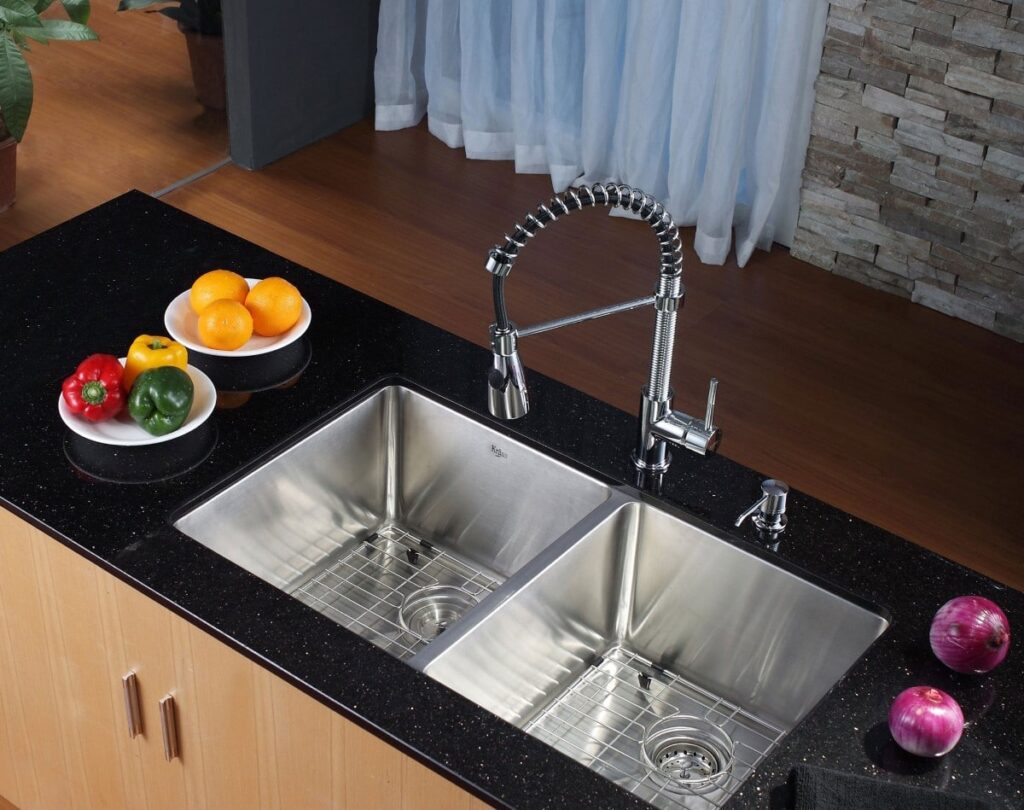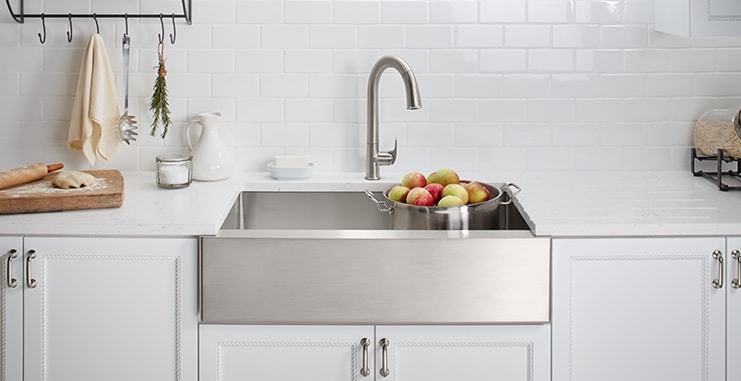If you have been remodeling your kitchen or thinking about remodeling your kitchen, then you have probably had a dozen important kitchen-related decisions that you’ve been batting around in your head, trying to make a definitive decision on. It’s not that uncommon for people to overlook things.
Remodeling Tips With Regards To Kitchen Sink
The last thing you want is to replace your floor, cabinets, backsplash, countertops, etc., and then realize a week later that you don’t want to use the old sink you had left from your previous kitchen.
The best-case scenario: You must pay to have the sink ripped out and replaced.
Worst case scenario: You find a new sink you absolutely love, only to realize that the sink base cabinet where you had your old sink is too small to accommodate the new one.
Then, you start to see what kind of changes you could afford to make to your brand-new kitchen cabinets so that you can fit a bigger sink. This cost could be high, but more importantly, it’s a cost that can be avoided.
There are many options when it comes to kitchen sinks.
The material the sink is made of, the number of water basins, and the way the sink mounts to the countertop are just a few of the choices you might not have considered. If you know your options, then hopefully, it will help you decide on the best sink for your kitchen.
Kitchen sinks come in various sizes. The important thing to remember is that your base cabinet needs to be large enough to accommodate your sink.
If you are using Ready-to-Assemble (RTA) cabinets, they probably gave you a few size options, like 30-inch, 33-inch, 36-inch, or something similar. If you are paying for custom cabinets, just make sure the cabinet builders are mindful of the width of your chosen sink.
A safe way to do this is to take the width of the sink and add 2 to 3 inches. Then, that length will be the minimum width of the base cabinet you can use.
For example, If your sink is about 30 inches wide, you should use a 33-inch or 36-inch base cabinet.
Some sink base cabinets are designed as corner cabinets to complicate matters even further. This option can be nice, especially if you have windows near your kitchen corner.
Another factor you will decide on is whether you want an under-mount sink, an over-mount sink, or a ” drop-in ” sink.
The lip and basin of the under-mount sinks attach to the bottom of the counter (as seen above), while the basin of the drop-in sink hangs down through the hole in the counter with the lip resting on top of the counter. (Below)
Both sink designs have supporters who swear by them and claim they are easier to clean. It is really just a matter of personal preference.
The material your sink is made of can drastically affect the look and feel of your sink area. White porcelain sinks offer a more traditional look.
Stainless steel gives off a more functional industrial feel.
As seen here, a far less common option is for the sink to be made from the actual countertop material.
Obviously, one of the biggest factors in choosing a kitchen sink is the number of basins you want. A single-basin sink usually has a very large basin that will fit large pots and pans and handle other large tasks easily.
The two-basin sink allows you to fill one basin with soapy water while leaving a second basin and drain open for rinsing off the dishes. While most kitchen sinks have one large basin or two fairly large basins, numerous varieties give you many options.
Many sink gadgets and gimmicks should also be mentioned when discussing the kitchen sink.
An apron sink (aka farmhouse sink) is a sink that has a large portion of the sink basin protruding through the front of the cabinet. This can be done with porcelain or stainless steel sinks.
Some kitchen sinks have three basin configurations. This stainless steel drop-in sink has a small third basin for washing dishes and a cutting board designed to fit over it. Many people like using dish strainers on the counter next to the sink.
This sink has a drainage area for the dish strainer integrated into the sink design.
This sink has a similar integrated strainer area in place of the right-hand sink basin. If you like the dish strainer area but do not wish to change the sink, there are ways to build this feature into the countertop, as seen in this apron sink.
Faucet fixtures with spray nozzles or other attachments are common. Some sinks have other features that could be helpful in cleaning or food preparation.
This sink features a small, narrow trough-like basin that runs along the top of the sink area. It also comes with a set of cutting boards and strainer inserts to aid food preparation.
You will find many more of these gimmicky kinds of sinks used in kitchen islands.
This small round pub sink also has a small insert for food prep and
this much larger round sink was designed to be accessible and useful to people on both sides of the island. Notice how the rotating wedge-shaped inserts can be arranged or rearranged to suit your needs.
This long, curvy sink was clearly designed with hosting parties in mind.
These are just some options that could affect your decision about what kitchen sink to buy. With any luck, you will know exactly what kind of sink you want for your new kitchen or at least the basic type of sink you are looking for.
At the risk of sounding cliche, don’t get stuck during your remodel just because you know what you want for everything but the kitchen sink.
























